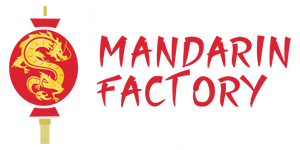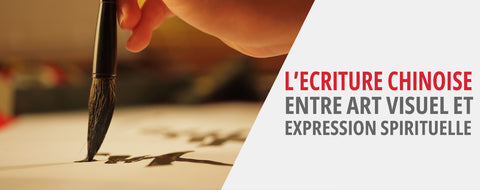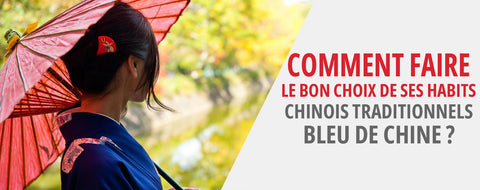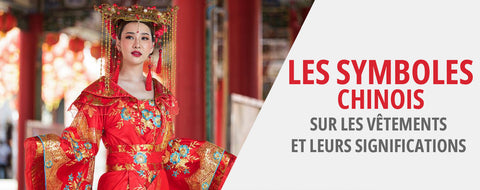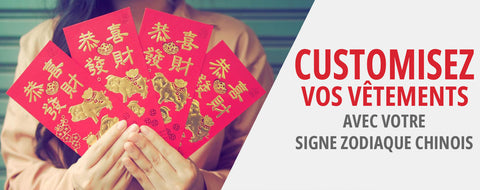
50 Traditional Chinese Paintings
reading - words
Chinese painting is an integral part of theasian art that we admire throughout the world. In its oldest form, this painting was done on pottery, as illustrated by certain finds dating from the Neolithic period, the last phase of the Stone Age.
Compared to Western art, Chinese painting is more interested in techniques based on of water, rather than oils or acrylics. In addition, Chinese painting is traditionally more stylized, more abstract, and less realistic than Western types. It also emphasizes the importance of white, or empty, space, and can be said to favor the representation of landscape in relation to portraiture, or figure painting.
If you are passionate about Chinese art like us, you will discover through this article the main techniques and illustrations of Chinese painting: representations of landscapes and flowers through animals.
Traditional Painting Techniques
Traditional Chinese painting ("guo hua") is similar to the calligraphy (which is itself considered a form of painting) and is executed with a brush, made of animal hair, dipped in black ink made from pine soot and animal glue or colored ink. Unlike Western painting, oils are generally not used. In Chinese painting, color, if any, is added to make the effect most faithful to the reality or to add a decorative accent and rarely as a structural element in design, as in Western art. pigments Brighter and more opaque ones derived from mineral sources are preferred for painting on silk, while translucent plant pigments predominate in painting on paper and produce a lighter and more delicate effect.
The most popular type of media is the paper or silk, but some paintings are done on walls or lacquers. works of art completed can then be stretched on parchments, which are hung or rolled up. Traditional painters can also paint directly on paper, walls, lacquer objects, China, screens and many other supports.
There are two main techniques of Chinese painting:
- Gong-bi (工筆), meaning "meticulous", uses very precise brushstrokes that delineate details with great precision. It is often very colorful and generally depicts figurative or narrative subjects. It is often practiced by artists working for the royal court or in independent workshops. Paintings of birds and flowers are often in this style.
- Ink and wash painting, in Chinese Shui-mo or 水墨 also called watercolor or brush painting, or "literary painting", because it was part of the "Four Arts" of the official class of Chinese scholars. In theory, it was an art practiced by the nobles, a distinction that begins to be made in the writings on the art of the Song dynasty, although in fact, the careers of the leading exponents of this art could benefit considerably from it. This style is also called "xie yi" or freehand style.
Chinese Landscape Painting
Many critics consider landscape to be the highest form of Chinese painting: it is traditionally at the top of the style hierarchy of Chinese painting. The first landscapes appeared as part of figurative painting, providing the natural setting for the narration of a story. It is very popular and is associated with refined scholarly taste. The Chinese term for "landscape" is composed of two characters meaning "mountains and water". It is linked to the philosophy of Taoism, which emphasizes harmony with nature.
Chinese artists usually do not paint real places, but imaginary and idealized landscapes. In China, mountains are associated with religion because they rise toward the sky. The Chinese therefore believe that looking at paintings of mountains is good for the soul. The period from the Five Dynasties to the Northern Song period (907-1127) is known as the "great era of Chinese landscape painting." In the north, artists such as Jing Hao, Fan Kuan, and Guo Xi painted images of imposing mountains, using strong black lines, ink washes, and sharp, dotted brushstrokes to suggest rough stone. In the south, Dong Yuan, Ju Ran, and other artists painted the hills and rivers of their native countryside in peaceful scenes done with softer, scrubbed brushwork. These two types of scenes and techniques have become the classic styles of Chinese landscape painting.

Chinese Flower Painting
Flowers are like emissaries of the beauty, greeting the spectators with their myriad shapes and colors. Indeed, the splendor they bring to nature moves the hearts of people all over the world. This is why artists and writers around the world have been drawn to flowers to this day, leaving behind many equally beautiful masterpieces. In China's oldest collection of poems and songs, the Classic of Verses 詩經, flowers often serve as metaphors for beauty. For example, "The peach tree is young and elegant" uses the beautiful imagery of delicate peach blossoms to express the joy of a young girl who has just gotten married. "With a face like the flower of hate" refers to the varied colors of a plant known in ancient times as the hedge flower (now called garden hibiscus, or Hibiscus syriacus) to describe the beauty of a young girl. These descriptions reveal the level of observation of the ancients regarding flowers some three millennia ago.
Throughout the history of Chinese painting, the three main subjects have been landscapes, birds and flowers, and figures. chinese flowers have become the object of attention and representation of painters throughout the ages. Artists have not been content with directly representing the outward beauty of flowers, they have also expressed the spirit and delicacy of their subject. Painters have gone even further to give flowers a meaning deeper, transforming them into objects that house feelings.

Chinese Animal Painting
In Chinese painting, animals have never been a simple decoration, but a means of conveying important lessons on the life and the philosophy, as well as political messages, in the manner of fables. Imbued with certain human characteristics ranging from strength and bravery to purity and fertility, the animals depicted in the art were carefully chosen by the artist. While these often hidden messages in art were easily understood in their time, with a little research, modern viewers and collectors can appreciate these works of art on a deeper level than equally pretty images.
"It's not just the symbolism of the animal, it's the way each animal is represented with interpretation, some with a simple namesake, others with an artistic representation" said Mary Ann Lum, co-owner of Gianguan Auctions in New York with Kwong Lum.
Here are the meanings of some animals in China:
- Cat : disperses evil spirits
- Rooster : Reliability, the embodiment of loyalty and punctuality, the rooster is also a symbol of advancement.
- Dragon : masculine vigor, fertility, ultimate abundance, prosperity, good fortune, also symbol of the emperor, divine mystical creature, symbol of the natural world, adaptability and transformation.
- Fish : surplus, abundance, wealth (the fish is one of the “Eight Buddhist Symbols of Good Fortune”)
- Horse : speed and perseverance
- Birds : attract joy related to the unity of people, stability, celebrations, happy occasions, great happiness

Chinese Character Painting
There human figure as a subject of Chinese painting appeared long before later popular subjects such as landscape or birds and flowers. In the early days, figure painting was mainly intended to serve religious or political purposes. Archaeological discoveries of paintings on silk and on the walls of tombs and caves provide insight into the development of figure painting from the Spring and Autumn Period (722–481 BC) to the Warring States Period (403–221 BC), the Han Dynasty (206 BC–AD 220), and the Wei and Jin Period (265–420).

List of Paintings:
For your viewing pleasure, we have selected a list of most beautiful traditional chinese paintings !
